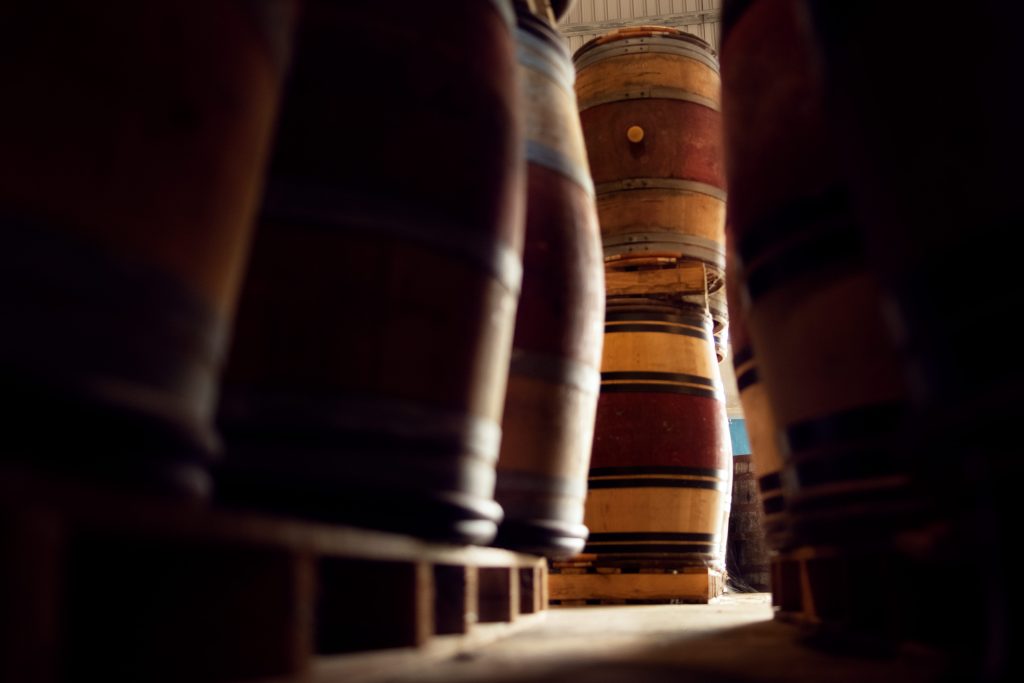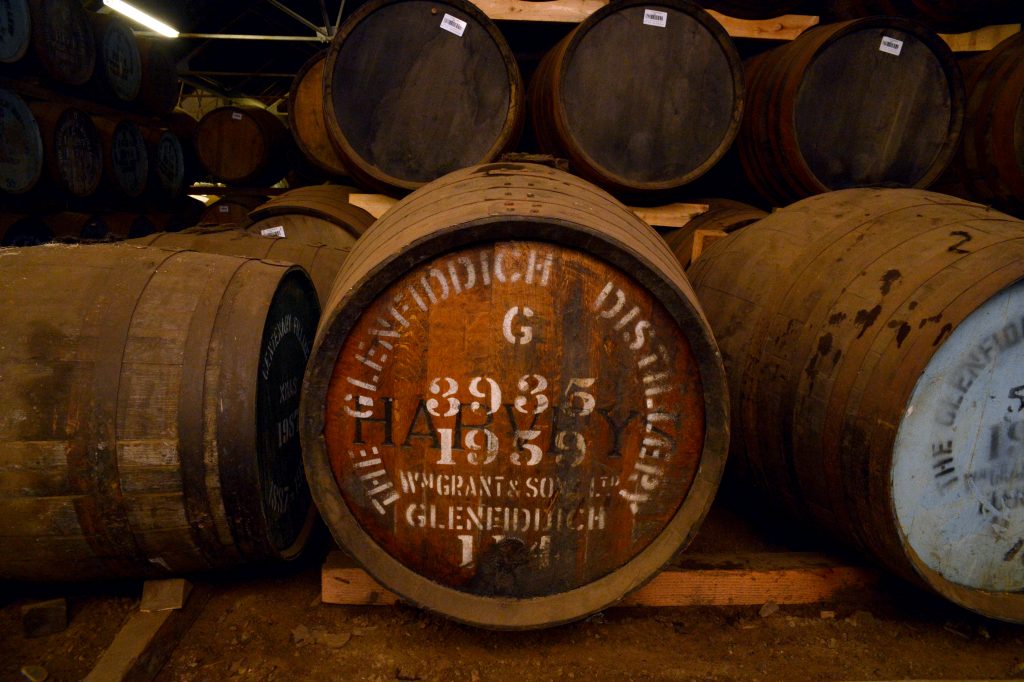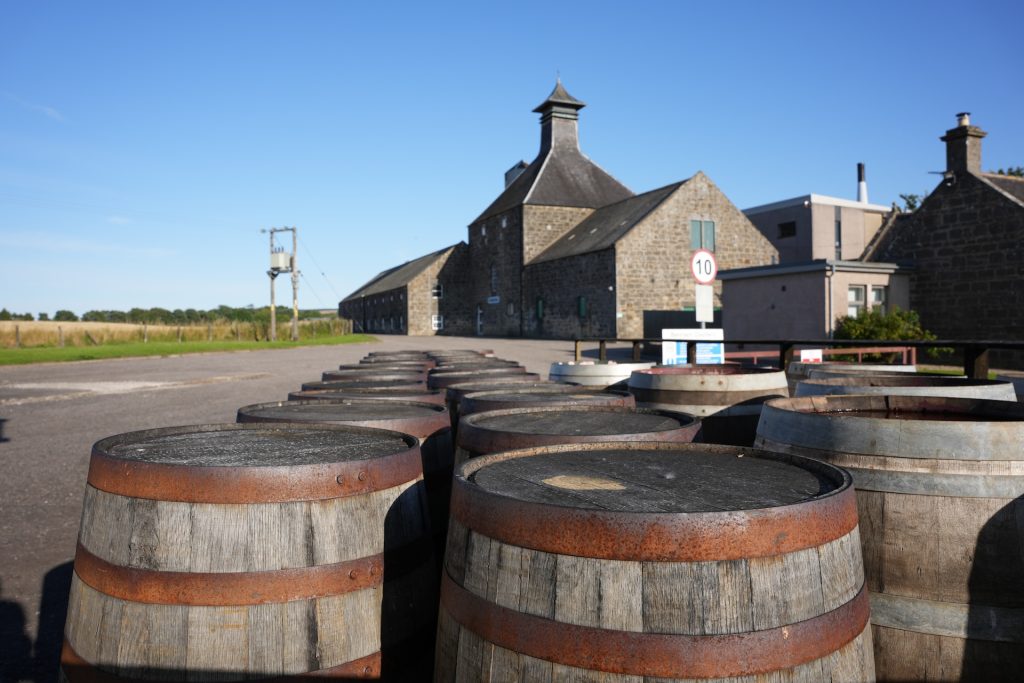
Table of Contents
Size and Type of Whisky Cask: A Guide to Barrel Selection
Ever wondered why two whiskies from the same distillery can taste so different? Beyond distillation, whisky cask types and sizes especially the different types of whisky barrels –have a profound influence on flavour, maturation speed, and even investment and collectability. In this guide, Cask Trade – a trusted bridge between Scotland’s cask market and Asia’s whisky collectors – explores how cask type, size, and treatment shape a whisky’s final character.
The Influence of Cask Types on Whisky
Each cask tells its own story. The type of oak, what it once held, and how it has been prepared will define the aromas, flavours, and depth of the final whisky. Here are the comparisons between common types of whisky casks:
Wood Origin
- American Oak (Quercus alba): Imparts notes of vanilla, coconut, caramel, and sweet spice. Its porous nature allows for faster extraction, producing a smoother, sweeter spirit. Standard for bourbon; widely reused globally.
- European Oak (Quercus robur): Denser and rich in tannins, offering flavours like dried fruit, nuts, and spice. Traditionally used in sherry butts for a deeper, more complex profile.
- French Oak (Quercus petraea): Adds finesse with floral, fruity, and spicy notes. Often seen in fine wine casks used for finishing premium whiskies.

Previous Contents
A cask’s previous contents significantly influence flavour. The preconditioning of the filling also determines the taste of the whisky. For instance, cask types seasoned with Oloroso sherry, Pedro Ximénez, or Port will have residual compounds absorbed in the staves. Upon refilling with new-make spirit, these casks recondition the whisky with layering on dried fruit, nutty, or sweet notes.
Cask Treatment
- Toasting (light–medium heat): This process gently heats the wood, breaking down wood compounds (lignin, hemicellulose, and tannins) to release desirable flavours of vanilla, honey, and nuts as the whisky matures. It enhances the overall sweetness and smoothness of the spirit.
- Charring (direct heat from flame): A more intense process, charring deeply caramelises the natural sugars in the oak, creating a layer of charcoal. This ‘alligator skin’ finish releases robust flavours like vanilla, spice, and caramel, while the charcoal acts as a natural filter, removing impurities and enhancing the interaction between the spirit and the wood.
- Rejuvenated: Represent a broad cooperage practice designed to extend the life of fatigued oak vessels, particularly those that previously held fortified wines. By reactivating the oak’s surface, these casks regain their ability to impart depth and character to the spirit.
- STR Casks (Shaved, Toasted, Re-charred): While rejuvenated casks broadly refer to restored barrels of various methods, STR casks represent a specific, standardised form of rejuvenation defined by three clear steps: shaving, toasting, and re-charring.This meticulous approach yields whiskies of striking red-fruit brightness, layered spice, toffee sweetness, and profound oak integration.
Cask Size and Its Impact on Whisky Flavour
Whisky cask sizes vary widely, determined by both their region of origin and intended purpose, with capacities like quarter cask (ranging from 45 to 125L) or the larger one up to 500L. The size of the cask influences whisky and affects the maturation process of the spirit, as different cask sizes impact whisky flavour development and ageing time. For both flavour and long-term ownership, cask size is a decision worth considering carefully. The following points highlight the key issues that need to be addressed:
Surface Area to Volume Ratio
The interaction between wood and spirit is the essence of maturation. The ratio of the internal surface area of the cask to the volume of liquid it holds is therefore fundamental.
- Smaller cask sizes (e.g. 45-50L) possess a much higher surface-area-to-volume ratio. This results in more wood contact per litre of spirit, leading to a faster and more intense flavour extraction.
- Larger cask sizes (e.g. 500-700L) have a lower ratio. This leads to a more gradual extraction and a subtler wood influence, allowing the spirit’s own character to develop and shine over a longer period.
Risk of Over-Maturation (for small casks):
Smaller casks face a high risk of over-maturation, as the oak, tannins, and bitterness can overpower the spirit very quickly. For instance, a whisky left in a 50L cask for more than 5 to 6 years may develop excessive oak notes and lose its taste balance.
Common Whisky Cask Sizes
The size of a whisky cask directly impacts flavour and maturation time. Here is a direct comparison of the most common capacities, including their typical flavour influence, maturation characteristics, and popularity in Asia:
| Cask Size & Type | Flavour Impact | Popular in Asia? |
|---|---|---|
| 50L (Octave) | Intense, spicy, quick oak extraction. | Rarely used due to high cost per litre and faster evaporation. |
| 125L (Quarter Cask) | Bold oak, strong spice, quick maturation. | Partly used for small-batch, flavour-driven releases. |
| 200L (American Standard Barrel/Bourbon Barrel) | Sweet vanilla, caramel, light oak. | Widely popular; common in China, Japan, India, Taiwan and Singapore |
| 250L (Hogshead) | Smooth, layered honey, vanilla, malt, gentle spice. | Popular for balanced maturation, especially sherry finishes. |
| 300L to 500L (Port pipe) | Rich berries, plums, dark fruit sweetness. | Limited use; preferred for special finishes in premium releases. |
| 500L (Butt) | Deep dried fruit, raisins, soft tannins. | Rising demand; Asian distilleries increasingly use sherry butts. |
| 500L to 700 (Puncheon) | Nutty, complex, slow maturation. | Rare in Asia; mostly specialist use, strongest presence in Japan. |
Asia’s growing whisky scene favours certain whisky cask sizes for their unique benefits. 200L American Standard Barrels (ASB) and 500L Sherry Butts are popular for their affordability and ability to deliver vanilla-forward or richly sherried profiles. Smaller whisky cask types like Octaves and Quarter Casks are favoured for rapid maturation but remain niche due to cost and evaporation. Larger casks, such as Port Pipes and Puncheons, are used for limited finishes, while Hogsheads provide a balanced option.
 Which Cask is Best for Flavour/Investment?
Which Cask is Best for Flavour/Investment?
From an investment standpoint, not all cask types are created equal. Based on our extensive experience in the market, the types of whisky barrels that possess the most enduring value are the 200L Barrel, 250L Hogshead, and 500L Sherry Butt. These medium to large sizes are esteemed by industry experts and collectors alike as the most desirable long-term assets, offering a refined balance of flavour development, maturation efficiency, market liquidity, and sustained demand.
Like any alternative investment, returns are not guaranteed based on a specific cask type.
Below are some key points regarding which cask types are popular amongst those who are looking to invest in casks as an alternative asset:
- 200L (American Standard Barrel/Bourbon Barrel): As the industry standard, these casks are highly traded worldwide. Their excellent liquidity and ability to produce well-balanced, desirable flavour profiles make them a reliable and fundamental asset for any collection.
- 250L (Hogshead): This cask is highly regarded for its ideal balance of maturation efficiency, flavour development, and strong market demand. It is popular among distilleries and collectors for its proven ageing potential and consistent market liquidity.
- 500L (Sherry Butt/Puncheon): Considered premium casks, their direct association with high-end luxury whisky brands ensures excellent appreciation potential. They are renowned for the complex, layered flavours developed through extended ageing, making them a prime target for serious collectors.
From Flavour to Finance: The Impact of Cask Selection
Understanding the impact of whisky cask types and sizes is essential for anyone seeking distinctive flavour or exploring whisky ownership. Cask value may fluctuate over time due to market conditions and the health of the cask itself, so regular liquid samples and re-gauges are crucial to assess readiness for bottling or sale. Partnering with a trusted expert like Cask Trade ensures a smooth, well-informed ownership journey from flavour preferences to future potential.
Whether you’re exploring whisky for collection or looking to diversify your tangible assets, understanding whisky cask types is the first step. Speak with our Cask Trade Asia experts today to discover the cask that suits your goals.

Reference:
[1] Alcohol Please HK – The Role of Oak Cask in Whisky
[2] Whisky Rant – Whiskey Cask Types – Complete List of Barrels and Their Uses



